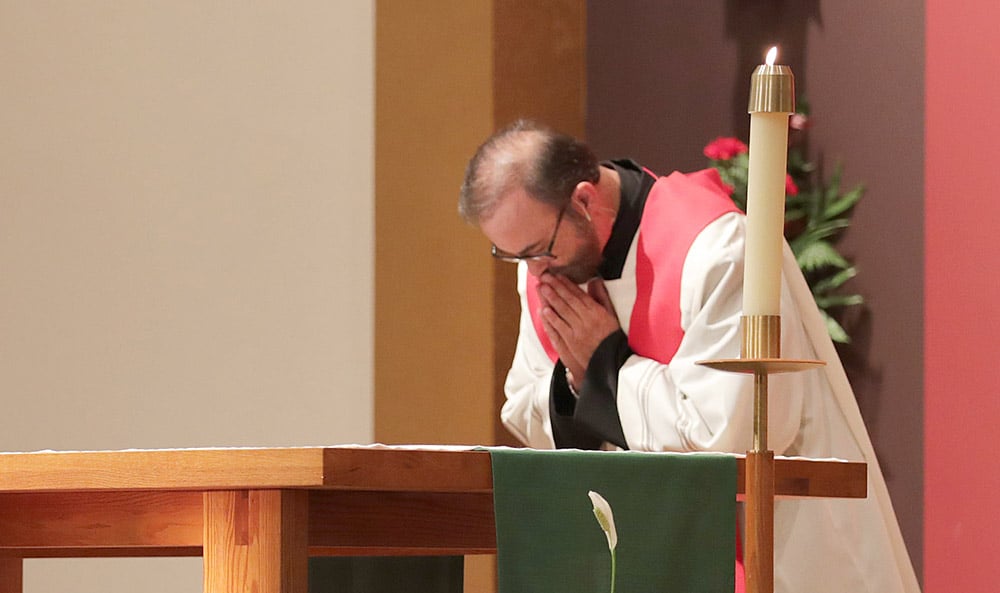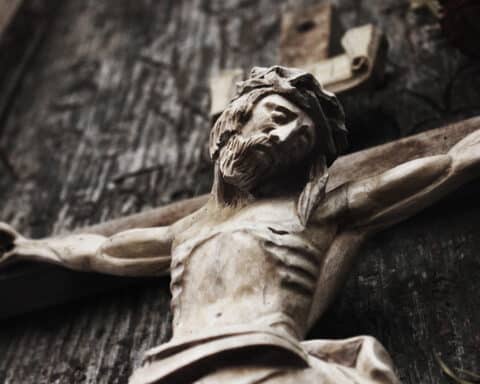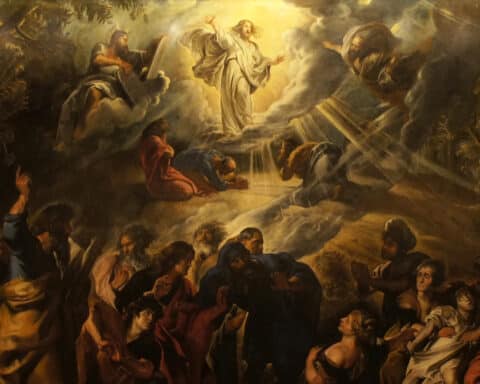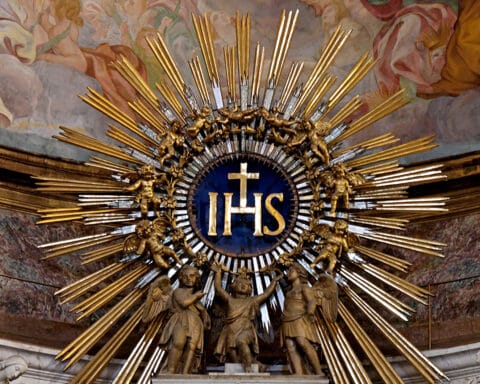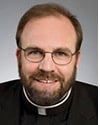
— Diane Garrett, via email
Answer: Liturgically it is not required. This is a pious custom that, while less common today, is still observed by many. This is not only in the liturgy, but at any time the name of Jesus is uttered, and also, quite commonly, the name of Mary. In the traditional Latin Mass, where clergy wear birettas (a kind of square hat with a pom), there is the additional tipping (lifting off) of the biretta at the names of Jesus, Mary and the saint of the day. This external and very visible action also helped the faithful remember to bow their heads.
This laudable custom has sadly declined. Some clergy and others still observe it, and, while it is not required, it is worthy of being encouraged. Other customs too should not be forgotten, such as making the Sign of the Cross when passing a Catholic Church, praying the Angelus at noon and 6 p.m., and so forth. The generations raised in the 1960s and ’70s largely abandoned such practices. However, many of their children have rediscovered some of these lost customs like a precious heirloom brought down from the attic. Thus, while being careful not to harshly judge those who do not follow this non-required custom, many can joyfully take it up again and encourage others to do so.
Peter as rock
Question: A Protestant told me recently that Peter can’t be the rock since Jesus is described as the rock and cornerstone of the Church, and he showed me a couple of places where Jesus is described as the cornerstone and even a stumbling block to unbelievers. Is there an answer for this?
— Allen Desome, Washington, D.C.
Answer: Of course Jesus, Peter and others who are called “rock” or stone are not literally chunks of stone. What we have in such attestations is the application of a metaphor. Scripture, like any lengthy document uses many metaphors, similes and analogies. Such things can be true in different ways.
In the Scriptures we see that Peter is called “the rock” by Jesus (Mt 16:18). Jesus is also called a stone (1 Pt 2:6). And the apostles and prophets are called foundation stones and Jesus as the cornerstone (Eph 2:20). The Book of Revelation describes the Twelve Apostles as foundation stones (Rev 21:14). So there are a number of “stone” references that need not be mutually exclusive.
Jesus is the deepest and surest foundation of the Church. That the Apostles, prophets and, in a special way, Peter are rock is understood in a subordinate sense. That is, they are rock and foundation for the Church on account of the grace and support of Jesus.
The Protestant to whom you refer fails to see the context and metaphorical sense of the texts and terms. He also fails to see that Jesus, while not abandoning his Church as her true head and foundation, does assign Peter a unique status to be the visible and identifiable rock on which the Church will be built. Peter (and his successors) is the rock, but he does not stand in midair. He is supported by Christ and his grace and affirmed by him as the visible rock and head of the Church. The Protestant approach is to see the Church as invisible. But Jesus did not establish an invisible Church. It is visible and with a visible rock and head: Peter and his successors.

